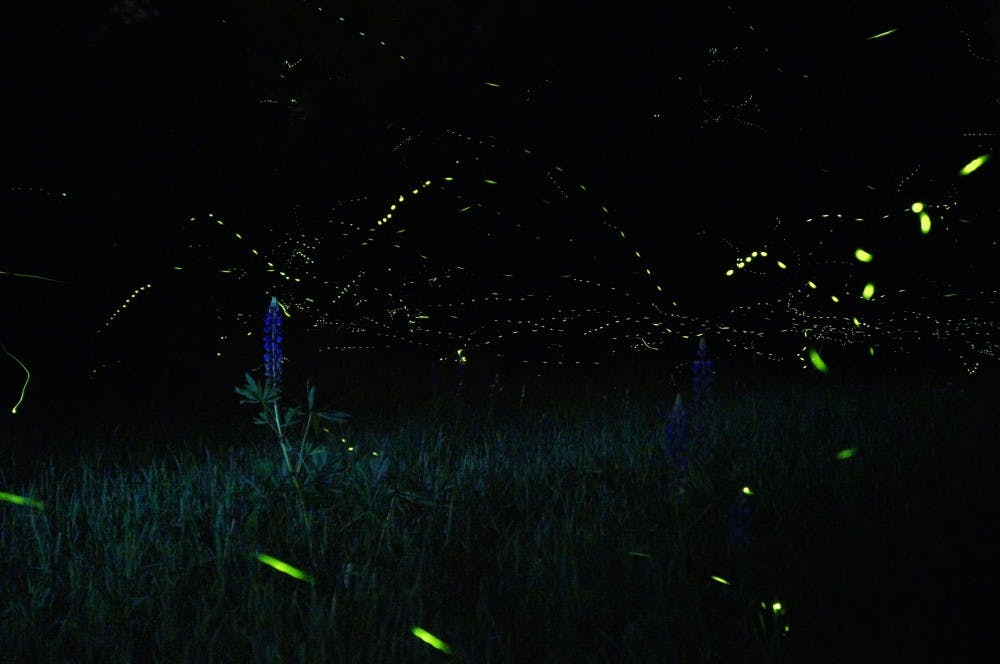The bugs of summer illuminate the darkening sky as the sun sets, emitting a yellow-flashing light just long enough to grab our attention before camouflaging once again against the black of night. We root our fondest childhood memories in chasing these little orbs of bright light around our backyards in the summer. But as the years go on, we see fewer throngs of dancing fireflies, leaving our Mason jars empty and our memories threatened.
This “ecological Armageddon” has been deemed the sixth extinction, caused by humans this time around. We have set our planet on course for failure, challenging its resilience time after time, only to exacerbate the profound, irreversible impacts on our society. This is not merely a call to action rooted in nostalgia — the rapid decline of our world’s insect population is a testament to the tragic depreciation of the natural world as a result of our complacency.
In 2017, a group of German entomological scientists and researchers released a study on insect dilution in their country. They found that “the overall abundance of flying insects in German nature reserves had decreased by 75 percent over just 27 years,” with an 82 percent drop in midsummer population peak levels. Further, in Britain, “30 to 60 percent of species were found to have diminishing ranges,” documenting a disappearance of bees, moths, beetles and butterflies most notably. While the trends worldwide vary considerably, “a 2014 review in Science … found that a majority of monitored species were declining, on average by 45 percent.” The statistics are sobering, and there are no signs of abatement without our collective action.
While the name for this problem, the windshield phenomenon, which describes how we are seeing fewer bugs than ever before, was coined just last year after the publication of the German study. It grants substantial evidence to the established “culprit of habitat destruction” concept we are all too familiar with unfortunately — climate change. It is no surprise that climate change is detrimental to biodiversity, generally speaking. Insects face insurmountable obstacles “posed by herbicides and pesticides, along with the effects of losing meadows, forests and even weedy patches to the relentless expansion of human spaces.” Rising temperatures transform landscapes into unfamiliar spaces, ultimately igniting a “transformation of the world” in response to perpetual human contamination. These are things we know to be true, and the windshield phenomenon only underscores the complications associated with ignoring the facts.
However, this speaks to an issue even more unsettling than the transformation of the world as we know it, for it is a product of a psychological phenomenon rooted in our evolution as humans. In his book, “The Human Relationship with Nature: Development and Culture”, Peter Kahn cites his study which investigates children’s understanding of pollution as it directly affects them in the city of Houston. While most of the children understood the concept in general, only one third of them believed pollution to be a significant environmental concern. Kahn names this process of normalization “environmental generational amnesia,” which ultimately explains our complacency — “with each ensuing generation, the amount of environmental degradation increases, but each generation takes that amount as the norm, as the nondegraded condition.” The collapse of our ecosystem has become a norm, perpetuated generation after generation upon our growing “accustomed to the fall.”
Collectively, we rely on gravely misleading information in so far as we assume our individual experiences, independent from those preceding our lifetime, are normative experiences in spite of the evidence pointing to the contrary. So what can we make of this social construction that has seeded itself deeply into our behavior? Kahn warns that the existence of environmental generational amnesia “helps provide a psychological account of how our world has moved toward its environmentally precarious state.” There is no escaping this cycle of deterioration until we wake up from our stupor and correct the mistakes of previous generations.
Adapting to a new normal is desirable only if that new normal holds promise for the future. And we can certainly conclude that a new normal characterized by functional extinction and global warming does not encourage such a growth. In order to bridge the gap between the dissemination of information stressing the impending deterioration of our ecosystems and our subsequent reception and response, we need to foster global collaboration and appreciate the gravity of an “insect apocalypse” once and for all. The decline of insects takes the shape of a domino effect for other living beings within the ecosystem, ourselves included — we see a collapse of the food chain. With our insect world living on borrowed time, we face “a loss of abundance that could alter the planet in unknowable ways.” As we cannot fix what we have forgotten, it is our responsibility to remember — and repair — mistakes of the past.
Lucy Siegel is an Opinion Columnist and was the 128th Opinion Editor for The Cavalier Daily. She can be reached at l.siegel@cavalierdaily.com.





